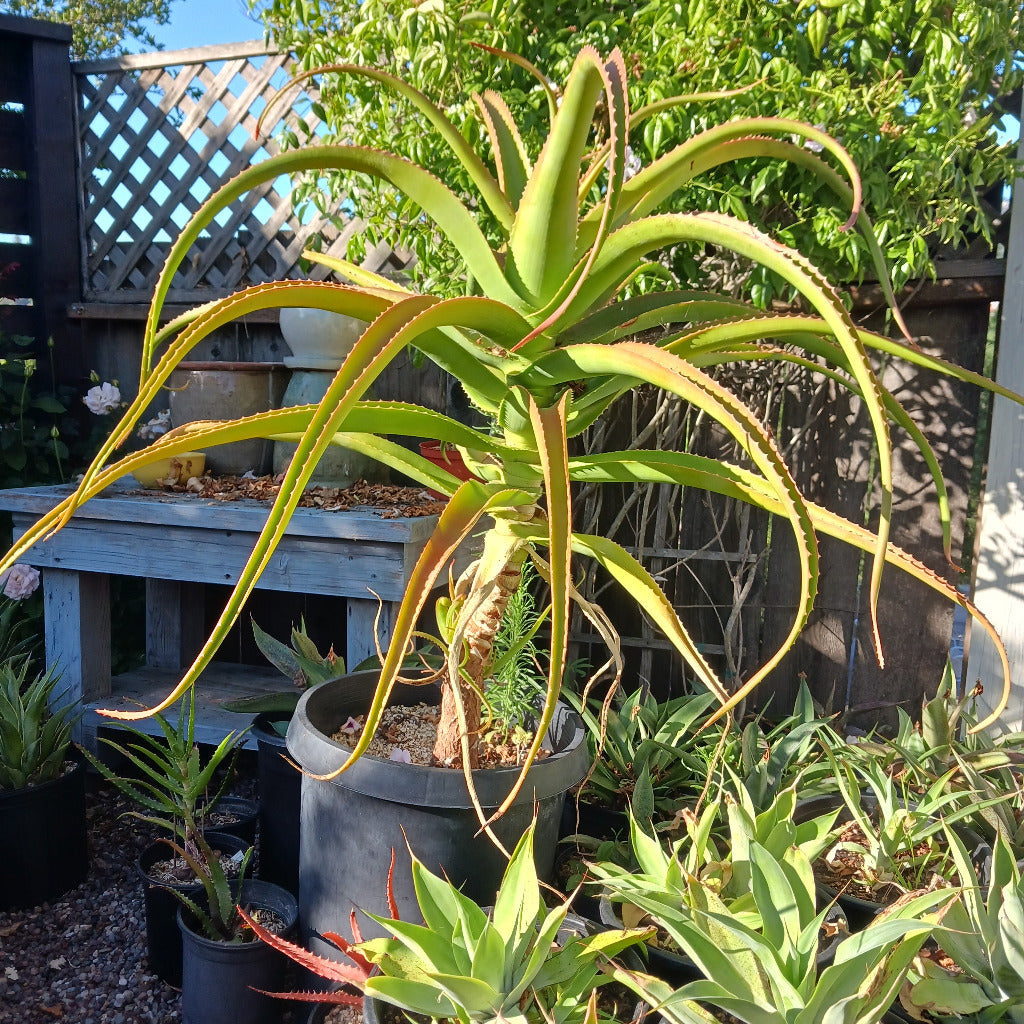Tips from Long-Term Cultivation

I’ve been growing Aloe helenae for several years now — it’s one of those plants that sneaks up on you with how quietly impressive it becomes. Though somewhat rare in the trade and critically endangered in the wild, it’s surprisingly undemanding if you understand what it wants. What follows isn’t a generic how-to article - it’s what I’ve learned through hands-on experience in coastal California, season after season.
Native Habitat
Aloe helenae is endemic to a small region of southern Madagascar, where it grows in dry, scrubby forests along the coastal plain. The climate there is warm but moderated by ocean breezes, with sandy soils and a distinct dry season. The plant has evolved in a relatively mild, maritime environment—not in the arid interior like many other aloe species. That coastal origin explains a lot about how it behaves in cultivation: it wants sun, but not baking heat; dry soil, but not utter desiccation; and airflow, not suffocating stillness.
Light & Exposure
Aloe helenae thrives in full sun—but there’s a caveat. While it does beautifully in coastal California conditions, it may struggle in hotter inland zones where sun exposure is more intense and temperatures stay high for extended periods. This is not a desert plant. If you’re in Arizona, inland Southern California, or similar climates, you may need to provide partial shade or filtered light, especially during the peak of summer. The leaves will turn a bronze color with more sun. The leaves can scorch or bleach if they get too much direct inland sun, especially in pots.
In coastal areas, I’ve grown it in full sun year-round without issue. Indoors, it requires the brightest window you can give it—south-facing is ideal. Just remember: more light means tighter form and better color, but there’s a limit, especially away from the coast.
Soil & Drainage
It doesn’t need anything exotic, but drainage is essential. I use a cactus mix amended with about 20% coarse mineral material—pumice, perlite, or crushed volcanic rock all work fine. You want it airy, but not so dry that roots can’t establish. I’ll often toss in about 10% garden compost to round out the mix and give a bit of organic content, especially for container plants. In the ground, make sure the planting site doesn’t hold water. Slight elevation or a natural slope helps.
Watering
In warm weather, I water every 10 to 14 days depending on how fast the soil dries out. Once the weather cools down, I ease off. In winter, especially during cold spells, I may only water once a month—or not at all if there’s been rain. When this plant is thirsty, the leaves begin to yellow slightly and shrivel.
Cold Tolerance
Aloe helenae is frost-sensitive. I've had leaf damage right around 31°F, and anything colder will likely knock it back hard. If your winters are borderline, plant it near a wall or under a canopy to take advantage of microclimates. If it’s in a pot, be ready to move it indoors or into a frost-free spot when needed. Once it gets going, it’s worth the extra effort.
Pests & Problems
The biggest nuisance I’ve dealt with is aphids, especially in the crown of the plant. They love the fresh new growth. Be sure also to check the underside of the plants leaves. I’ve had good results knocking them back with a basic spray bottle filled with 70% (max) isopropyl alcohol—no need for cotton swabs or Q-tips. Be careful not to use a 90% alcohol as I've seen it burn the leaves of other Aloes. Just mist the infested areas and repeat as needed. I've never had an issue with mealybugs or scale on this species, but it's always smart to keep an eye out. If you notice ants on the plant then it is a reliable clue that they are cultivating aphids on your plant.
Root rot is the bigger concern, especially in cold, wet conditions with poor drainage. If you get the soil mix right, and don’t overdo winter watering, it’s mostly avoidable.
Container Growing Tips
This is a great species for large pots if you don’t have in-ground space. A 15-gallon container is a good long-term home, though I’ve used smaller containers for a while with the expectation that it will run out of space within a few years. It appreciates depth - this species, like other tree Aloes, have vigorous, quick growing roots - so avoid wide, shallow containers. Repotting isn’t frequent, but when the roots circle or you notice reduced vigor, it’s worth refreshing the mix.
Flowering & Growth
When mature, Aloe helenae puts on a show in late winter to early spring. The inflorescences are tall and graceful, with flowers that start a rich yellow and often take on warm orange tones. First-year blooms can be modest, but in later years the display becomes increasingly impressive. The plant itself slowly gains height over time—developing a slender trunk and a rosette that looks like it belongs on a distant, semi-tropical hillside.


Final Thoughts
Aloe helenae isn’t the most common aloe in cultivation, but it’s one of the more rewarding Aloes if you’re patient. It has elegance without being fussy, and once established, it holds up through heat, wind, and drought—as long as you don’t treat it like a desert cactus. Give it sun (but not blazing desert sun), sharp drainage, and a little room to grow—and it’ll quietly become a centerpiece in your garden or collection.
Learn about large Aloes in our guide to 15 Tree Aloes that add structure to your garden
